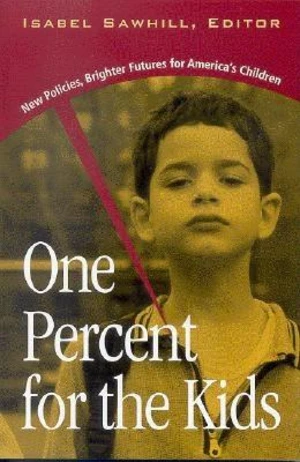In the United States, long considered the land of opportunity, children born into different types of families begin life with very unequal prospects. A growing group of children is being raised in families in which a poorly educated mother begins childbearing at an early age, often outside marriage, and ends up dependent on public welfare. Another group is raised by parents who delay childbearing until they are well-educated, married, and have stable jobs; these children go on to lead more advantageous lives. While virtually everyone talks about the importance of investing in the next generation, in the late 1990s federal spending on children represented only 2 percent of the nation's gross domestic product. This volume argues forcefully that the life prospects of children at the bottom of the socioeconomic ladder can be improved substantiallyand the growing gap between them and more privileged children reducedby making appropriate investments now. Taking their cue on funding from the Blair government in the United Kingdom, which since 1997 has invested almost an extra 1 percent of GDP to reducing child poverty, the contributors offer specific proposals, along with their rationales and costs, to improve early childhood education and health care, bolster family income and work, reduce teen pregnancy, encourage and strengthen marriage, and allow families to move to better neighborhoods. The final chapter assesses the progress of the Blair government toward reaching its goals. Contributors include Isabel Sawhill (Brookings Institution), Greg Duncan (Northwestern University), Katherine Magnuson (Columbia University), Andrea Kane (Brookings Institution), Sara McLanahan (Princeton University), Irwin Garfinkel (Columbia University), Robert Haveman (University of WisconsinMadison), Jens Ludwig (Georgetown University), David Armor (George Mason University), Barbara Wolfe (University of WisconsinMadison), Scott Scrivner (Public/Private Ventures), and John H
Price history
Nov 9, 2022
€20.99

